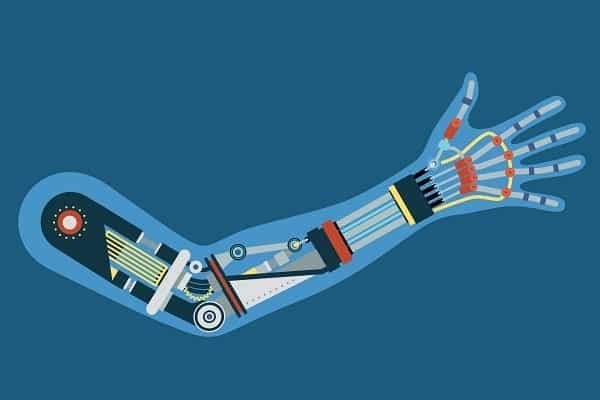
Surgical Techniques That Improve the Use of Bionic Limbs
This document helps amputees monitor all current and future surgical techniques that may improve the use of bionic limbs and/or reduce pain.

Which Myoelectric Pattern Recognition System is Right for You?
We are entering a period of bionic arm & hand development that is both exciting and potentially confusing. This article is meant to clarify the most recent options for pattern recognition systems.

Myoelectric Pattern Recognition for Bionic Arms & Hands
If you want to avoid surgery, combining myoelectric skin sensors with pattern recognition is currently your best option.

Bionic Hands: Finding the Right Myoelectric Control System
Bionic hands hold the promise of greatly restored capabilities but their myoelectric control systems are not as reliable as they need to be.

Bionic Arm & Hand Control Systems
Some believe that the most important parts of a bionic arm/hand are its electromechanical components. This is not true. The most important component is the user control system.

Neural Interface Surgery
Neural interfaces are currently the leading option to provide true sensory feedback from bionic limbs, but they have significant drawbacks.

Implantable Myoelectric Sensors
Implantable myoelectric sensors eliminate many of the drawbacks of skin-surface sensors. The question is, are they worth invasive surgery?

Targeted Sensory Reinnervation (TSR)
Targeted sensory reinnervation is a method where a patch of skin is denervated, then reinnervated with nerve fibers from an amputated limb.

Regenerative Peripheral Nerve Interface (RPNI)
The Regenerative Peripheral Nerve Interface (RPNI) reduces painful neuromas and strengthens muscle contractions for enhanced bionic control.

Targeted Muscle Reinnervation (TMR)
Targeted Muscle Reinnervation is the surgical reassignment of nerves to alternative muscles to improve myoelectric control and reduce pain.

Bionic Leg & Foot Control Systems
The current control systems for bionic legs & feet are mostly autonomous, but researchers are actively exploring direct control and sensory feedback.

Magnetomicrometry (MM) for Bionic Limb Control
Users will not be satisfied until they have precise, intuitive control over bionic limbs. Magnetomicrometry may help fulfill this goal.

Advanced Neural Interfaces for Bionic Hands
Bionic hands will only reach their full potential if we restore true thought control and sensory feedback, which will likely involve a neural interface.

Agonist-antagonist Myoneural Interface (AMI)
A new surgical technique is improving the ability of end-users to sense the position and movement of bionic limbs, as well as reducing phantom pain.

A Guide to Electronic Skin
Electronic skin will play a key role in achieving full sensory feedback from bionic limbs. Here is the current state of this technology.